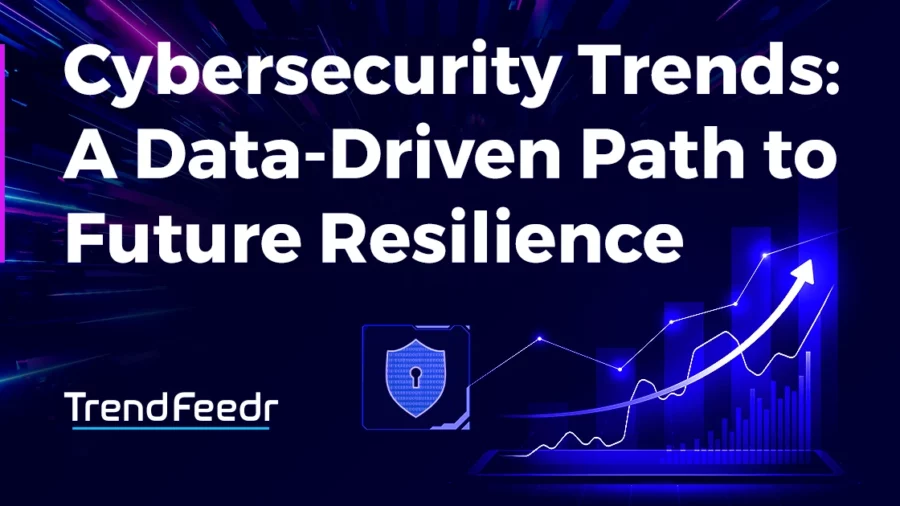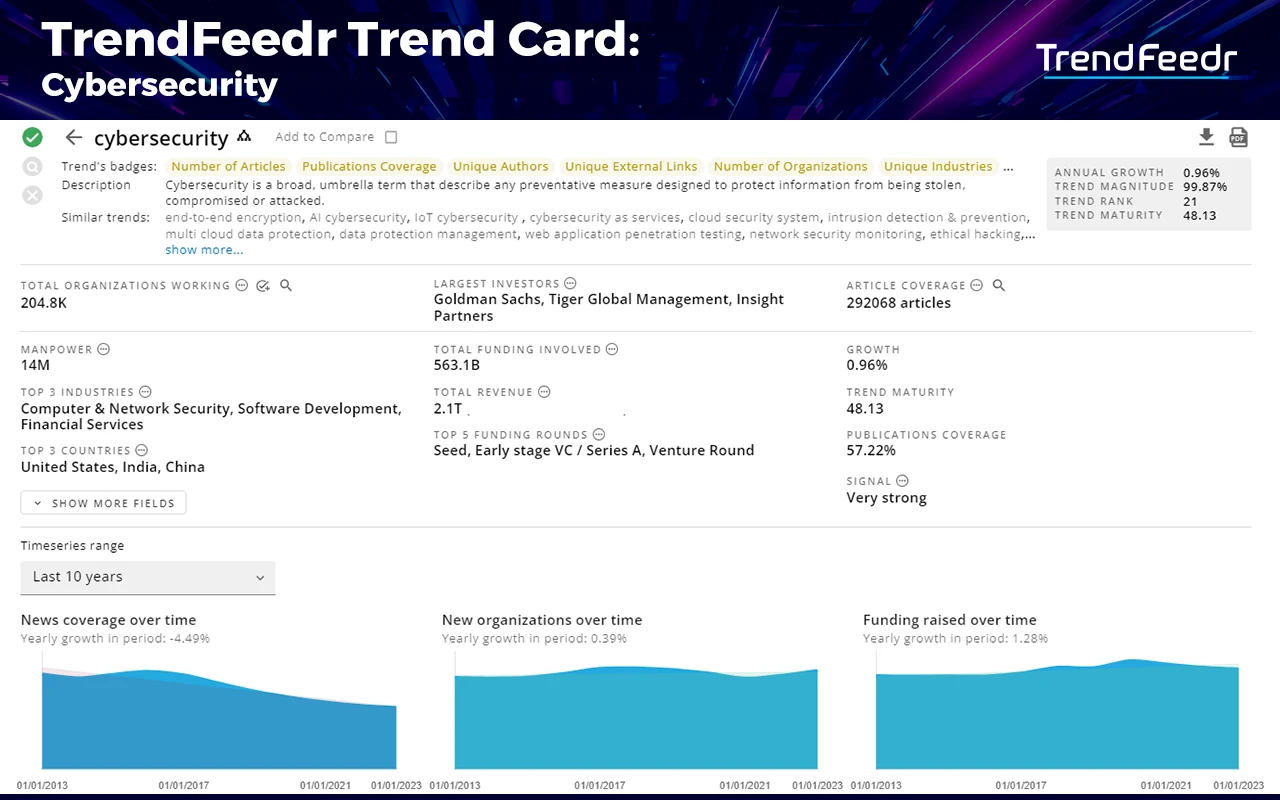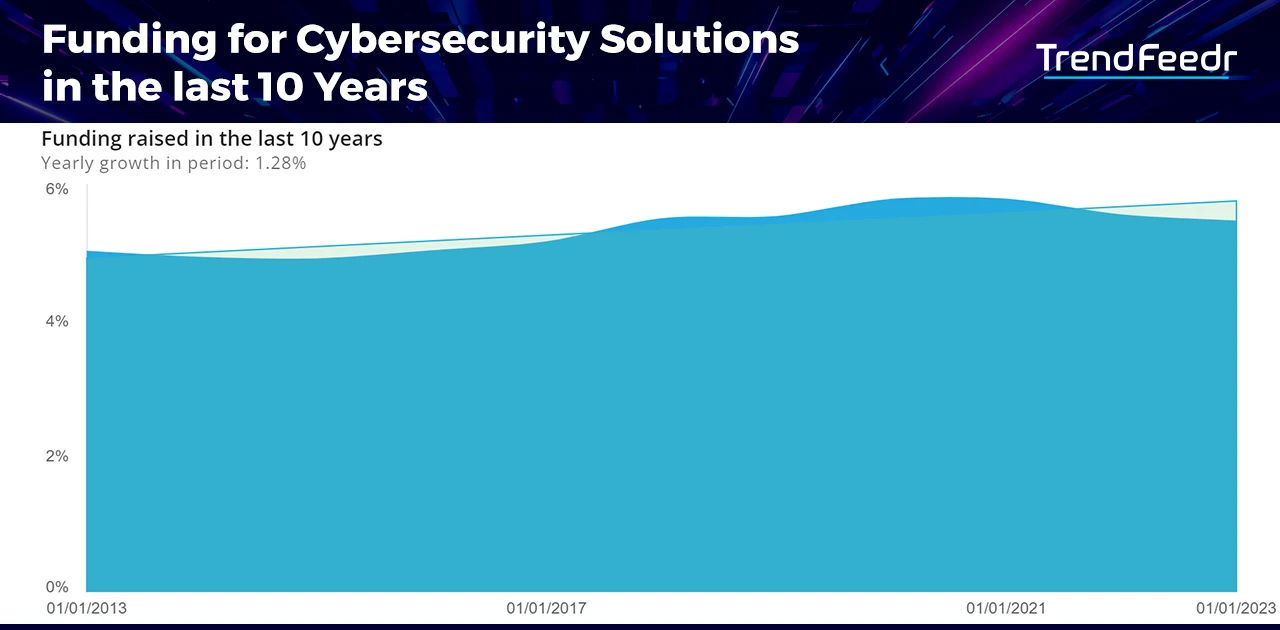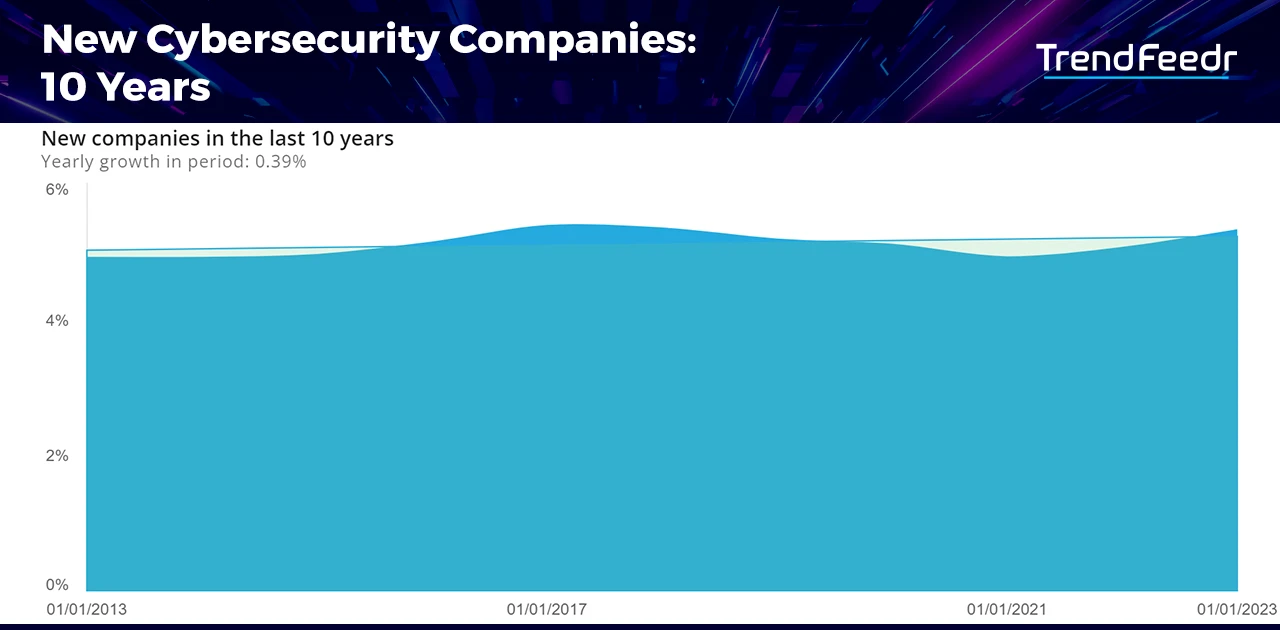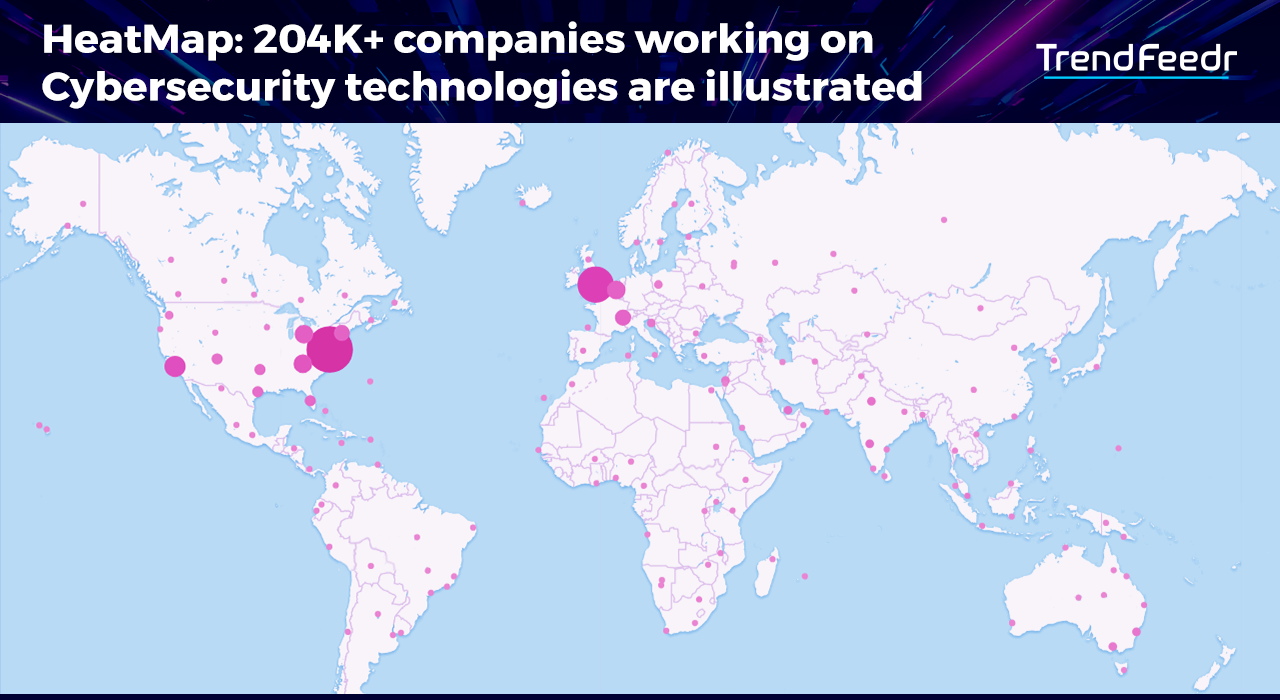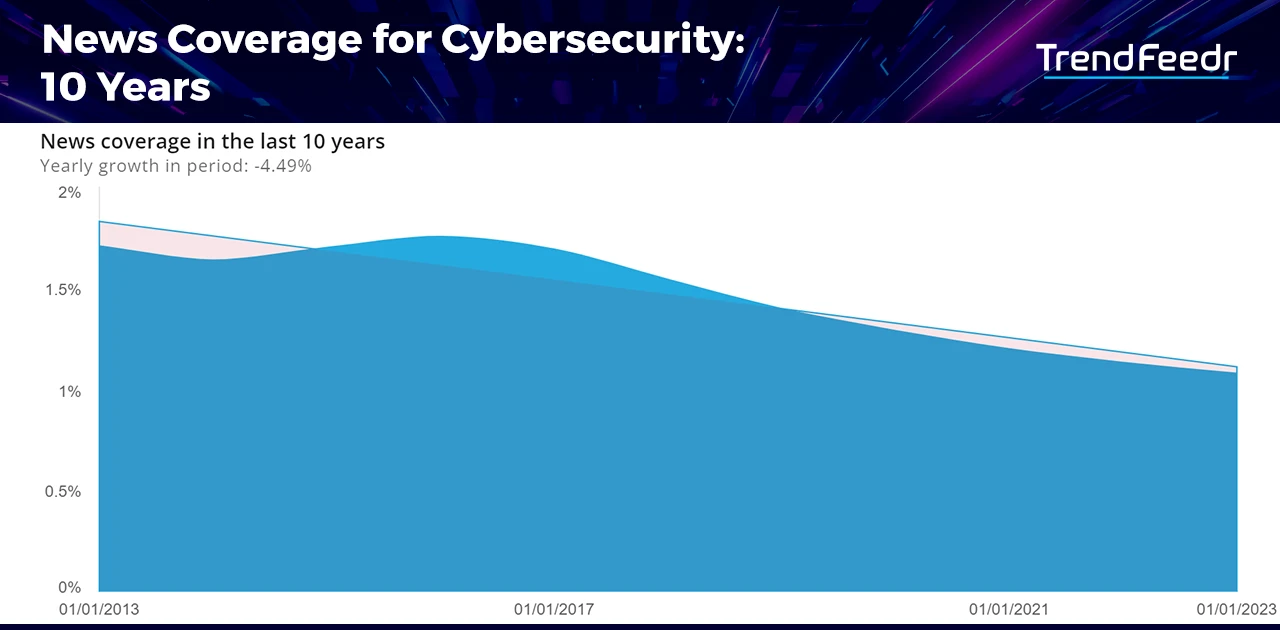As the world increasingly embraces digital technologies, the importance of cybersecurity trends has grown significantly. In fact, the global cost of cybercrime is projected to skyrocket over the next five years, increasing from $8.44 trillion in 2022 to a staggering $23.84 trillion by 2027. This highlights the urgent need for robust cybersecurity measures to tackle the growing threat of cybercrimes.
Take, for instance, a company that is on the verge of launching a groundbreaking new product. However, just days before the launch, their system is hit by a ransomware attack, paralyzing operations and causing a crisis. This nightmare scenario is not as improbable as it may seem. In fact, according to Cybersecurity Ventures, by 2031, businesses will fall victim to a ransomware attack every 2 seconds, up from every 11 seconds in 2021.
The stakes are high, but so are the opportunities. Understanding emerging cybersecurity trends is not only about risk management; it’s also about harnessing new technologies to secure competitive advantages, foster innovation, and protect long-term growth.
Key Takeaways
- Top-Ranking Trend: With a trend magnitude of 99.87% and a trend maturity of 48.13%, cybersecurity is a significant focus within the digital landscape.
- Interconnected Technological Trends: Companies in the cybersecurity space are expanding their focus to include related trends such as zero trust architecture, end-to-end encryption, AI in cybersecurity, IoT cybersecurity, cybersecurity as a service, and cloud security systems.
- Organizational & Funding Landscape: Approximately 204K organizations are engaged in cybersecurity initiatives, with a total funding of US$563.1 billion raised.
- Notable backers such as Tiger Global Management, Insight Partners, and European Investment Bank have heavily invested in cybersecurity ventures.
- Global Adoption: The United States, India, China, Russia, and Canada are leading countries in cybersecurity initiatives, with London, New York City, Sydney, Singapore, and Melbourne being key cities with substantial activity.
Table of Contents
- Understanding Cybersecurity Trends
- Cybersecurity Performance Analysis – How Safe are Current Measures?
- Key Cybersecurity Trends & How Companies are Advancing Them
- How Much Money is Invested in Cybersecurity?
- How Cybersecurity Disrupts Industries
- The Global Adoption of Cybersecurity Trends
- Future Outlook of Cybersecurity
In this data-driven deep dive, we examine the newest advancements in cybersecurity, focusing on zero-trust architecture, end-to-end encryption, AI in cybersecurity, IoT security measures, cybersecurity as a service, and cloud security systems.
For this in-depth research of cybersecurity trends, we leverage TrendFeedr, our all-in-one trend intelligence platform. TrendFeedr identifies future industry and tech trends via advanced, proprietary algorithms. With a focus on trend discovery, clustering, and analysis, the AI-powered platform screens thousands of trends each week to track their development and curate actionable insights.
Cybersecurity has made a significant impact among the 20,000+ trends and technologies monitored by TrendFeedr. Here’s why:
- This trend ranks in the top 0.12% of global trends, addressing growing threats and vulnerabilities that come with an ever-expanding digital landscape.
- Compared to other trends, cybersecurity stands out with a magnitude of 99.87%, indicating its near-ubiquitous importance across various sectors.
- The rise of cybersecurity highlights the critical need for strong security measures to protect data, systems, and networks from cyber threats in an increasingly interconnected world.
This article delves into the details of cybersecurity trends, covering aspects such as performance, investment, regional, and future trends.
Understanding Cybersecurity Trends
Cybersecurity is a dynamic field that demands constant vigilance, adaptation, and a proactive approach. Consequently, understanding current and future trends and their technical mechanisms is crucial for making informed decisions.
What are Cybersecurity Trends?
The field of cybersecurity is currently being impacted by several trends, including the rise of zero-trust architecture, endpoint security, and the growing importance of cloud security. Additionally, the expansion of threat intelligence, the integration of AI and machine learning into security measures, and the need for IoT security are also shaping the industry. Other notable trends include the emphasis on regulatory compliance, securing the supply chain, and the increasing prominence of employee cybersecurity awareness training.
What are the latest Cybersecurity Trends?
The most prominent trend, zero-trust architecture, is a security model that abandons the traditional perimeter-based approach. It assumes that no request is trustworthy, regardless of whether it comes from inside or outside the organization. It uses micro-segmentation to divide the network into smaller zones, each requiring separate access permissions. For example, Google’s BeyondCorp is a zero-trust network model that allows employees to work securely from any location without needing a traditional VPN.
IT security trends – AI and machine learning are algorithms that detect complex attack patterns and anomalies that humans cannot spot. They use pattern recognition and predictive algorithms to analyze network behavior and alert for any anomalies. For instance, Darktrace’s cybersecurity solutions leverage machine learning to detect, respond to, and mitigate cyber threats in real-time.
Endpoint detection and response (EDR) is a technology that focuses on securing endpoint devices, which are more vulnerable due to the increase in remote work. EDR systems monitor endpoint activities and identify potential threats or ongoing attacks. They use real-time behavior analytics and other technologies like digital forensics to track endpoint activities and prevent attacks.
Cybersecurity Performance Analysis – How Safe are Current Measures?
Introducing the Cybersecurity Trend Card: Your Go-To Resource for Understanding the Cybersecurity World. It digs deeper than just basic stats—giving you a full picture. You’ll learn about the companies leading the way in cybersecurity, the experts driving these initiatives, and the investors backing them. We also delve into the financials, like where the money is going and how it’s growing. By covering the impact of cybersecurity across various industries and places, our analysis gives you a complete understanding to shape a secure digital future.
Cybersecurity is a rapidly growing and essential field, with an annual growth rate of 0.96% and a trend magnitude of 99.87%. It ranks among the top 0.12% of all trends covered by TrendFeedr, and its trend maturity of 48.13% indicates that it is still in its prime and evolving quickly. This shows that cybersecurity is a crucial area of focus for businesses.
Looking for all trends related to cybersecurity?
How Companies are Driving Key Trends in Cybersecurity
Approximately 204K organizations actively involved in cybersecurity are broadening their initiatives into related trends. Let’s look at some of these trends influencing the future landscape of digital security and risk management.
Zero-Trust Architecture
- The Zero Trust Architecture approach, working on the simple idea of not trusting any request, ensures full authentication regardless of the request’s origin.
- Interestingly, 174 forward-thinking organizations have stepped into this area, together raising a notable US$593.7M in funding.
- With a combined team of 8521 talented people, these organizations are strengthening digital systems, making sure that access to data is strictly checked and safe.
End-to-End Encryption
- End-to-end encryption is a fundamental component of secure digital communication, ensuring that only the communicating parties read the messages.
- With 1138 organizations investing in this technology and a total funding of US$3.8 billion, it is a crucial area of focus for safeguarding privacy.
- The employment stands at 22,000 experts, highlighting its significance in providing a secure foundation for digital transactions and communications.
AI Cybersecurity
- This trend involves the utilization of artificial intelligence to predict, analyze, and mitigate cybersecurity threats.
- A total of 1079 organizations are leading the way for an AI-driven future with substantial funding of US$3.4 billion.
- A workforce of 55.9K supports this trend, demonstrating the level of expertise being invested in AI-centric cybersecurity solutions.
IoT Cybersecurity
- As our lives become increasingly interconnected, securing each connected node becomes essential. IoT cybersecurity addresses this need by providing robust safeguards for interconnected devices.
- The trend keeps 741 organizations busy and has attracted US$2.1 billion in funding.
- Moreover, a highly specialized workforce of 63.6K indicates a focused approach to ensuring IoT security.
Cybersecurity as a Service
- Managed cybersecurity services offer organizations an external source of expertise to augment their internal capabilities. These include solutions like threat monitoring, vulnerability assessments, and incident response.
- A total of 695 organizations are driving this trend forward with an allocated funding of US$723.2 million.
- Further, a workforce of 24.7K demonstrates its growing popularity.
Cloud Security System
- Cloud computing is already a part of today’s computing environments and its security is of utmost importance due to its extensive use.
- 304 organizations are directing their efforts towards cloud security systems with US$381.3 million in funding.
- With a workforce of 10.8K, this trend is increasingly becoming a cornerstone of the security infrastructure for cloud-based operations.
Staying updated on cybersecurity trends gives businesses the knowledge they need to boost their competitive edge and also make the digital world safer for everyone.
Cybersecurity Investment Trends: Breaking Down the Numbers
The financial support for cybersecurity is robust, with funding for this trend ranking among the top 5% of all 20K+ trends covered by TrendFeedr. Over the past decade, funding for cybersecurity ventures has experienced a steady yearly growth rate of 1.28%. While this figure may seem small, it is a reliable indicator of the industry’s resilience and its ability to adapt to market dynamics.
How Much is Being Invested in Cybersecurity?
According to TrendFeedr, the total funding in the cybersecurity industry amounts to an impressive US$563.1 billion. The largest single investment is US$2.1 billion, marking the acquisition of New Era Securities by China Chengtong Holding Group. Interestingly, the average investment is US$37.7 million while the median is US$2.6 million. This indicates a skewed distribution where a few major players receive the majority of the funding.
Similarly, TrendFeedr estimates that the revenue figures across the cybersecurity trends are totaling US$2.1 trillion with an average revenue of US$14 million and a median of US$2.4 million. This suggests that many firms in this field are smaller and more specialized.
The top five funding rounds dominate the cybersecurity funding landscape, following a distinct pattern. Seed funding serves as the initial catalyst for startups, enabling them to transition from concept to early-stage development. As they demonstrate market viability, startups often secure early-stage VC or Series A funding to refine their solutions and begin scaling. Subsequent venture rounds and M&As are not uncommon, providing capital for market expansion and technological advancement. Additionally, accelerator and incubator programs consistently contribute to the growth of emerging companies by providing mentorship and resources.
It is also worth noting that only 0.86% of cybersecurity companies received a total of 2389 grants, indicating that while grant funding is relatively rare, it remains an important part of the overall funding landscape.
Highlights of Cybersecurity Funding
An in-depth analysis of the financial backing in the cybersecurity industry reveals the involvement of major investors.
Tiger Global Management is a significant player, having invested US$6.1 billion across 39 ventures, with their most substantial contribution towards Lacework, with investments of US$1.3 billion.
Insight Partners has also been active in the field, directing US$5.3 billion towards 74 organizations, with Transmit Security and Copado receiving US$543 million and US$270.8 million respectively.
Accel is also at the forefront of the cybersecurity investment landscape, having invested an impressive US$2.9 billion across 52 companies. Their largest allocation has been to Socure and 1Password, with an investment of US$550 million and US$300.1 million respectively.
In terms of public investments, they have invested US$6.4 billion in 15 companies, with Asset World Corp and Visional Inc being the major beneficiaries, receiving US$1.6 billion and US$632 million respectively.
Additionally, the diversity and specialization of funding for cybersecurity are impressive, with a unique group of investors supporting this trend, placing it in the top 5% of all trends.
How Cybersecurity Disrupts Industries
Cybersecurity is revolutionizing a multitude of sectors. Here’s a detailed analysis of the top seven sectors where its impact is most significant.
Computer & Network Security
There is a strong emphasis on cybersecurity trends such as zero-trust models and endpoint security in the computer & network security industry. Companies like Surf are at the forefront of these trends, providing more robust solutions to defend against sophisticated cyber attacks.
Software Development
In the field of software development, companies are increasingly adopting DevSecOps approaches, which integrate development and security operations to create more secure applications. This approach is being implemented by companies such as Apiiro, which combines automated risk assessment, threat modeling, and continuous security testing. Such an approach ensures secure and compliant software delivery.
Financial Services
The rapid growth of FinTech has increased the risk profile of the financial services industry, making it more vulnerable to cyber-attacks. To combat this, machine learning-based fraud detection systems are becoming increasingly prevalent. Companies, such as Cashfree, are automating inbound and outbound bank transfers as well as enhancing fraud detection.
Healthcare
The need to protect patient data has led to the adoption of cybersecurity measures such as data encryption and multifactor authentication (MFA), aligning with evolving cybersecurity healthcare trends. Several startups, including Cylera, offer specialized solutions to healthcare providers for secure data management. These solutions also contribute to the integrity of the entire healthcare system.
Retail
With the rise of e-commerce, cybersecurity measures such as payment gateway security are of utmost importance. Companies like Imperva have implemented advanced security features to ensure safe transactions for both consumers and retailers. This proactive approach to cybersecurity improves consumer trust, which is essential for the long-term success and credibility of online shopping platforms.
Energy and Utilities
This industry is often targeted for industrial espionage and disruption. As a result, there is a high demand for cybersecurity solutions that protect supervisory control and data acquisition (SCADA) systems. Companies like Cisco are leading the way in providing specialized solutions to meet this need. By focusing on cybersecurity, these companies ensure the uninterrupted delivery of essential services and strengthen the infrastructure against potential attacks.
Government & Public Sector
As potential targets for state-sponsored attacks, this sector is integrating advanced threat protection systems. For example, Check Point offers a suite of government cybersecurity solutions to protect sensitive data and maintain infrastructure integrity. The adoption of such specialized solutions further enhances the resilience of critical systems against evolving cybersecurity threats.
In conclusion, companies across various industries are implementing advanced cybersecurity measures to safeguard against sophisticated attacks and ensure the protection of their data and infrastructure.
Pioneering Organizations: Who is Advancing the Cybersecurity Revolution?
In the past decade, there has been a modest increase of 0.39% in the number of new organizations focusing on cybersecurity. This indicates that while the field is becoming more competitive, there is still ample opportunity for innovative companies to establish themselves and make an impact.
In-depth figures reveal that the cybersecurity industry employs a total of 14 million people, averaging 96 employees per company, with a median count of 15. This data highlights the industry’s diverse landscape, from large corporations to smaller specialized firms that serve as its backbone. Employment growth is robust yet measured, adding 931,400 new roles annually, with an average growth rate of 7 and a median rate of 2.
Moreover, cybersecurity startups are at the forefront by providing new solutions that redefine digital security and data protection. These startups are addressing some of the most critical challenges in the field, from zero-trust architecture and threat intelligence to endpoint security and AI-driven anomaly detection. Let’s take a look at the top cybersecurity companies founded in the last six years and their contributions to the future of cybersecurity.
- Onyxia Cyber – An operator of a SaaS platform that utilizes AI to provide real-time cybersecurity strategy, management, and performance insights for security teams.
- Seif.ai – A cybersecurity company specializing in cyber risk scoring and forensics that allows businesses to assess and manage risks from vendors, suppliers, and other external entities.
- Prevasio – A provider of an agentless cloud-native application protection platform (CNAPP) that identifies security and compliance gaps, aiding security teams in prioritizing risks and maintaining compliance standards.
- Alias Robotics – A cybersecurity firm protecting robotic systems with a robot immune system that anticipates and mitigates vulnerabilities, safeguarding robots from third-party cyber-attacks.
- Cylus – A cybersecurity company dedicated to protecting railway and metro systems that detect and control cybersecurity events in a timely manner, preventing safety incidents and service disruptions.
The Global Adoption of Cybersecurity Trends
The Heat Map below clearly shows the global distribution of 204,800 organizations that are leading the way in innovative cybersecurity solutions.
Interested to explore all 204K+ cybersecurity companies?
While cybersecurity trends are a global phenomenon, it is evident that certain areas are leading the way. The United States, India, China, Russia, and Canada are among the dominant players in the field of cybersecurity. This indicates that both Western and Eastern powers are heavily invested in securing their digital borders.
The United States sets the global standard with its cybersecurity initiatives, while India and China are emerging as powerhouses in this field. Russia is also investing deeply in state-of-the-art cyber protection mechanisms and Canada focuses on ethical hacking and cybersecurity governance.
Focusing on individual cities, London emerges as a global hub for cybersecurity, closely followed by New York City. Both cities have a vibrant ecosystem of startups, research and development centers, and academic institutions dedicated to cybersecurity. Sydney, Singapore, and Melbourne also feature on the list, demonstrating that the Asia-Pacific region is making significant progress in cybersecurity innovation.
Cybersecurity Media Coverage Dipped by 4.49% Over the Decade
Media attention can often serve as a strong indicator of a trend’s significance and impact. Interestingly, cybersecurity news coverage has experienced a decline, with yearly growth decreasing by 4.49% over the past decade. While this may initially seem concerning, it could indicate that the novelty of the trend is evolving into a more stable focus. Perhaps, it could also mean the media is shifting its attention to new sub-trends within the cybersecurity ecosystem.
Despite the concerns, cybersecurity remains a rapidly growing trend, with its publication coverage ranking in the top 5% of all global trends. In fact, a staggering 292,068 articles related to this trend were published between 2005 and 2023, placing it in the top 5% of all 20K+ trends covered by TrendFeedr.
Future Outlook of Cybersecurity
Digital technology is integrated into every aspect of business and personal life, making cybersecurity increasingly vital. Here are some informed insights on cybersecurity future trends:
Regulations and Compliance
As cyber threats become more prominent, regulatory bodies will introduce stricter cybersecurity laws. These may require real-time reporting of cyber incidents, impose large fines for data breaches, and mandate third-party security audits. Companies will establish compliance departments focused solely on meeting these changing regulatory standards, making compliance a crucial part of corporate cybersecurity policy.
Democratizing Cybersecurity Skills
The shortage of skilled cybersecurity professionals has been an ongoing issue. To address this, educational institutions will offer more cybersecurity courses, and companies will launch internal training programs. Open-source learning platforms will provide accessible courses, allowing even those without formal education to acquire essential cybersecurity skills.
Advanced Threat Detection
The next generation of cybersecurity solutions will use machine learning algorithms to analyze user behavior and network traffic, identifying unusual activity and potential threats before they cause harm. These proactive systems will integrate seamlessly with existing security infrastructure, providing real-time insights and automated responses to threats.
Decentralized Models
Centralized databases are attractive targets for hackers. To counter this, organizations are adopting decentralized technologies like blockchain and distributed computing for secure and transparent data storage and transactions. This shift will have implications not only for financial transactions but also for identity management and supply chain security.
Comprehensive Cyber Insurance
As understanding of cyber risks improves, insurance products will evolve to cover a wider range of scenarios, from data breaches to business interruption due to cyber incidents. Companies will seek and also be required to have comprehensive cyber insurance policies, making it a standard business requirement.
Understanding these trends and preparing for these future scenarios enables businesses to better navigate the complex and ever-changing digital frontier.
Strategic Cybersecurity: Future-Proof Your Business Now
Keeping up with cybersecurity trends is more crucial than ever. As cyber threats grow increasingly complex, the future holds both challenges and promises for digital security. The ongoing efforts of key players in the industry are gradually bolstering our digital defenses.
To maintain a competitive edge, it is vital to integrate these cybersecurity developments into your business strategy. Staying informed is simpler than you might think—keep an eye on reputable publications, engage in online security forums, follow industry thought leaders, or attend related events. You can also turn to trend-monitoring tools like TrendFeedr for real-time updates on cybersecurity advancements.
By keeping your finger on the pulse of the cybersecurity world, you’ll be better positioned to make informed business choices that meet upcoming market needs.

